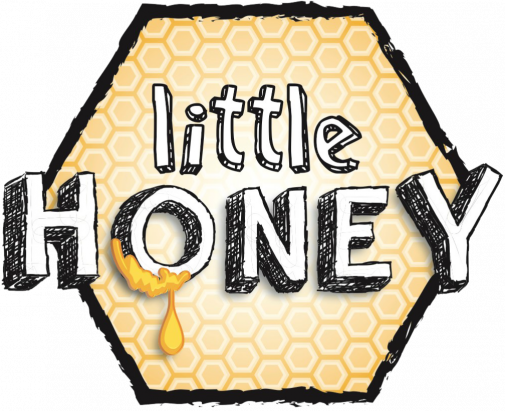
Sidr Honey Straws Specialist Singapore
The Science Behind Honey and Diabetes: Myths vs. Facts
Think honey’s a no-go for diabetes? Think again! Explore the surprising science separating the myths from facts about honey and diabetes.
When it comes to managing diabetes, few topics spark as much debate as the role of natural sweeteners like honey. While some believe honey is a safe alternative to sugar, others warn against it due to its natural sugar content. At Little Honey, we’re passionate about educating our customers about the benefits of raw honey and its potential role in a healthy lifestyle. In this article, we’ll explore common misconceptions, examine scientific evidence, and offer practical tips for diabetics who are considering incorporating honey into their diet.
Debunking the Myths: Is Honey Safe for Diabetics?
Myth 1: Honey Is Just as Bad as Refined Sugar
Many assume that because honey contains natural sugars, it impacts blood glucose levels the same way as refined sugar. However, this isn’t entirely true. The glycemic index (GI) of raw honey is generally lower than that of processed sugar, meaning it causes a slower rise in blood sugar levels. For example, Sidr honey, known for its premium quality, has a GI of around 35-55, while white sugar has a GI of approximately 65.
Myth 2: Honey Can Replace All Sugars Without Risk
While honey offers additional nutrients such as antioxidants, vitamins, and minerals, it still contains carbohydrates. This means that diabetics must monitor their intake to avoid blood sugar spikes. Replacing all sugars with honey is not a magic fix; it requires moderation and balance.
The Facts: Research-Backed Insights on Honey and Diabetes
Studies suggest that high-quality, raw honey, like the varieties we offer at Little Honey, may have unique benefits for those managing diabetes:
- Improved Insulin Sensitivity
Research shows that certain types of honey, such as natural organic honey, can enhance insulin sensitivity in individuals with type 2 diabetes. This means the body becomes more efficient at using insulin to regulate blood sugar. - Antioxidant Properties
Honey is rich in antioxidants, which can reduce inflammation and oxidative stress—two factors that often exacerbate diabetic complications. - Impact on Lipid Profiles
Consuming moderate amounts of raw honey has been linked to improved cholesterol levels, which is particularly important for diabetics prone to cardiovascular issues.
However, these benefits are often associated with pure honey, free from additives or adulteration. Beware of honey with no mixing or artificial sweeteners, as these can counteract the potential health benefits.
How Diabetics Can Safely Incorporate Honey
Choose High-Quality Honey
Not all honey is created equal. Opt for raw, unprocessed, and pure honey to ensure you’re getting the maximum nutritional benefits. Sidr honey is an excellent choice for diabetics due to its lower glycemic index and high antioxidant content.
Monitor Your Blood Sugar Levels
If you’re new to using honey as a sweetener, start small and keep track of how it affects your blood sugar levels. Everyone’s body reacts differently.
Pair Honey with Low-GI Foods
Combining honey with fiber-rich foods like oats or whole grains can slow sugar absorption, preventing sudden spikes in blood glucose.
Consult a Healthcare Professional
Before making dietary changes, it’s always best to speak with your doctor or a registered dietitian, especially if you’re managing diabetes.
Honey vs. Other Sweeteners for Diabetics
Diabetics often wonder how honey compares to other sweeteners like stevia or artificial sweeteners. While sugar substitutes may have zero calories or carbohydrates, they lack the nutritional value of raw honey.

- Stevia: A natural sweetener with no impact on blood sugar but offers no additional nutrients.
- Honey: Contains vitamins, minerals, and antioxidants, making it a more wholesome choice when consumed in moderation.
- Artificial Sweeteners: Though calorie-free, some studies link excessive consumption to gut health issues.
When used wisely, natural organic honey offers a middle ground between health benefits and flavor.
The Role of Honey in a Balanced Diabetic Diet
Integrating raw honey into a diabetic diet requires careful planning and mindfulness. Here’s how:
- Use it as a natural sweetener in herbal teas, yogurt, or smoothies.
- Avoid combining honey with high-GI foods like white bread or processed snacks.
- Replace refined sugar in recipes with a smaller amount of honey, keeping portions in check.
At Little Honey, we recommend using Sidr honey for its premium quality and nutritional profile, especially for health-conscious individuals.
Why Choose Little Honey?
At Little Honey, we take pride in offering some of the best honey in Singapore. Our collection of raw honey is carefully sourced to ensure it’s free from additives, making it suitable for diabetics and health enthusiasts alike.
With a commitment to providing pure honey in Singapore, we cater to those seeking a healthier lifestyle without compromising on quality or taste.
Conclusion
The relationship between honey and diabetes is nuanced, but with the right approach, raw honey can be a part of a balanced diet. By choosing high-quality honey and consuming it mindfully, diabetics can enjoy its unique flavor and health benefits.
Ready to experience the difference? Explore our range of raw honey in Singapore at Little Honey and make a healthier choice today.
Share this post :
Categories
Latest Post


How Singapore Businesses Use Honey for Corporate Gifts?

Honey for Kids: The Natural Way to Keep Them Healthy





